Keeping track of driving hours shouldn’t feel like solving a puzzle, but for many CDL drivers, that’s exactly what hours of service (HOS) regulations have become. Between the 11-hour rule, 14-hour limits, and 30-minute breaks, managing your available drive time can feel overwhelming — especially when a simple mistake could mean hefty fines or being placed out of service during a roadside inspection.
While HOS regulations have evolved over the years, the core purpose remains simple: keeping you and everyone else on the road safe by preventing driver fatigue. Modern electronic logging device (ELD) technology has transformed hours tracking.
In this guide, we’ll break down everything you need to know about how many hours can a CDL driver drive — from the basic rules to the smart ways technology can keep you compliant and earning. Whether you’re hauling freight cross-country or running local routes, you’ll learn exactly how many hours you can drive and how to make the most of every minute behind the wheel.
Do you have any questions? Talk to ELD Advisor: 650-405-3372 or Request Callback
Understanding CDL Hours of Service Rules: The Complete Breakdown
How many hours a day can a CDL driver drive depends on what they’re hauling and where they’re going. Federal regulations set different limits for property carriers versus passenger carriers, with additional exemptions for short-haul operations. Let’s break them down.

Property-Carrying Drivers (Most Common)
If you’re hauling freight, here are your key limits. The 14-hour rule gives you a maximum work window from the moment you start your shift. Once you go on-duty, you have 14 consecutive hours to complete all driving — this clock doesn’t pause for breaks or loading time.
Within that window, the 11-hour driving limit sets your actual wheel time. You can drive a maximum of 11 hours, but only after 10 consecutive hours off-duty. This is pure driving time — traffic jams count just as much as highway cruising.
Before starting a new shift, you need the 10-hour off-duty requirement. This can be in your sleeper berth, at home, or any combination of off-duty time totaling 10 consecutive hours.
The 30-minute break rule requires a break after 8 hours of driving. You must take at least 30 consecutive minutes off-duty, on-duty not driving, or in the sleeper berth before driving again. Since 2020, you have more flexibility — even time at a shipper counts if you’re not driving.
Looking at your week, the 60/70-hour limits cap your total on-duty time. If your carrier operates every day, you’re limited to 70 hours over 8 consecutive days. Otherwise, it’s 60 hours over 7 days. These are rolling limits — hours from 8 days ago drop off daily.
The 34-hour restart lets you reset your weekly hours. Take 34 consecutive hours off-duty, and your 60/70-hour clock returns to zero — useful when you’re running low on weekly hours but have good loads available.
Passenger-Carrying Drivers
Bus and motorcoach drivers follow different rules. You get a 15-hour on-duty limit (one hour more than freight), with a 10-hour driving limit within that window. Your required break is shorter — just 8 consecutive hours off-duty between shifts.
Notably, passenger carriers don’t need the 30-minute break that freight haulers require. You can drive your full 10 hours without mandatory breaks, though passenger stops naturally create rest opportunities. The same 60/70-hour weekly limits apply.
Short-Haul Operations (150 Air-Mile Radius)
Local drivers often qualify for the short-haul exemption. If you return to your starting location daily, stay within 150 air miles (about 172.6 actual miles), and work within 14 hours, you don’t need an ELD — just time records showing start, end, and total hours.
For CDL drivers: The same 150 air-mile and 14-hour limits apply. You can drive up to 11 hours within that 14-hour duty period.
For non-CDL drivers: You also use the 150 air-mile exemption with the same 14-hour duty limit, provided you don’t drive in states that require a CDL for your vehicle type.
Many delivery and utility drivers fall into this category, maintaining simple time records instead of detailed logs. However, if you exceed the 150 air-mile radius or 14-hour limit more than 8 times in any 30-day period, you’ll need to use an ELD.
Special Circumstances
Real-world driving requires flexibility. Adverse driving conditions grant a 2-hour extension when unexpected weather or road conditions slow you down — extending your 11-hour drive limit to 13 hours and your 14-hour window to 16 hours.
Personal conveyance lets you drive off-duty for personal reasons like getting food or finding parking, as long as you’re not advancing the load. Yard moves cover repositioning equipment on private property without using drive time.
The sleeper berth provision offers maximum flexibility. Split your 10-hour break into two periods: one of at least 7 hours in the sleeper, another of at least 2 hours off-duty or in the sleeper. If used correctly, neither counts against your 14-hour window, essentially pausing your clock — perfect for managing appointment times and parking challenges.
Understanding these rules is just the beginning. The real challenge is tracking them accurately while focusing on the road — which is where ELD technology becomes invaluable.
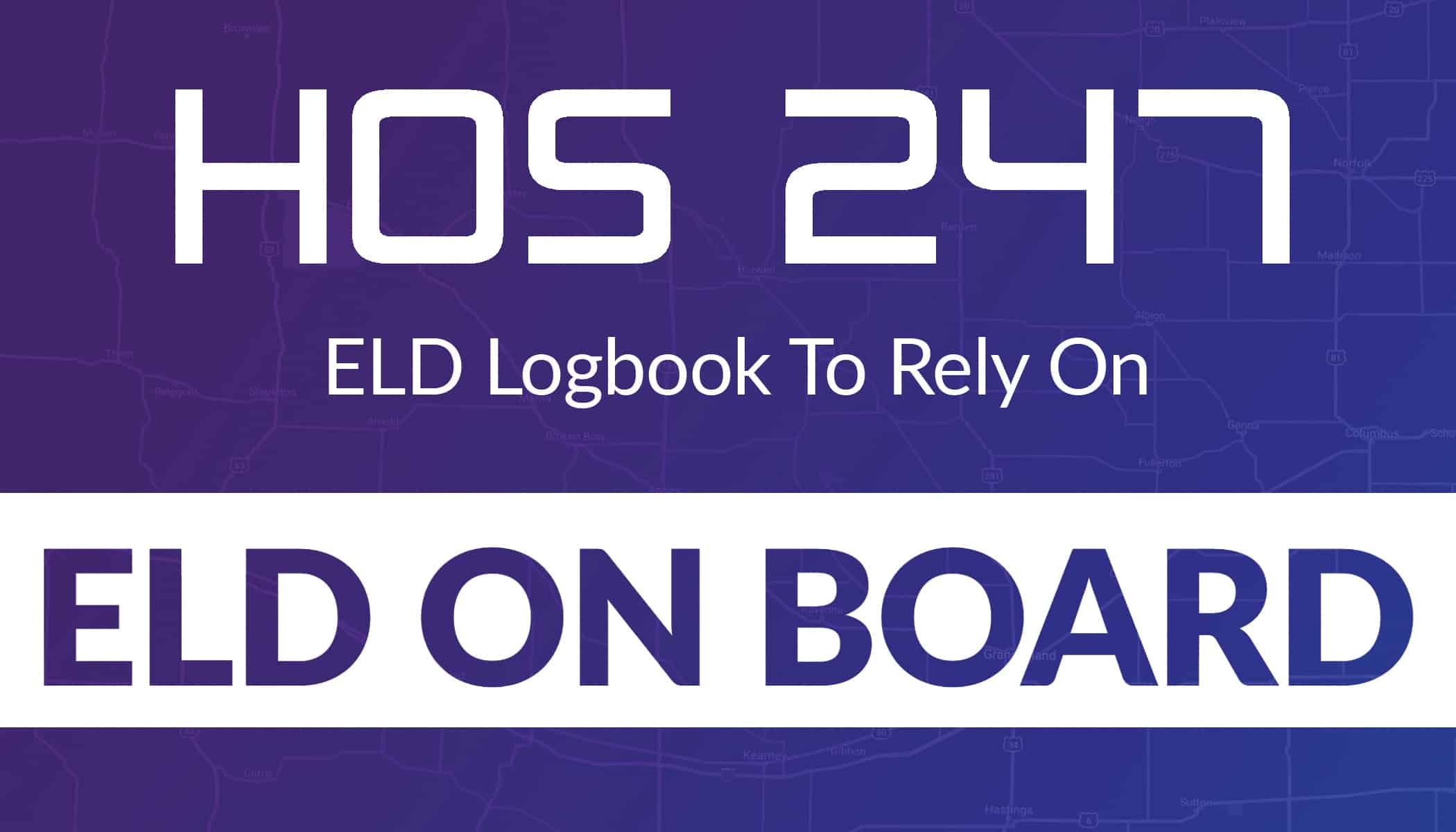
Why ELD Technology Matters for Hours Tracking
Manual paper logs might seem simple, but they’re a liability waiting to happen. One math error during a roadside inspection can mean hours of delays and potential fines. Forget to update your status after a fuel stop? That’s a violation. Accidentally calculate your available hours wrong? You could be driving illegally without even knowing it.
The real cost of manual logging goes beyond compliance issues. You’re spending 15-20 minutes daily on paperwork that could be automated. That’s nearly two hours weekly of unpaid administrative work. Worse, you’re always second-guessing yourself. “Did I log that shipper delay correctly? When exactly did I start driving this morning?” This mental burden adds unnecessary stress to an already demanding job.
Your electronic logging device automatically records when you’re driving, capturing exact times and locations without any input needed. Real-time alerts warn you before you violate any HOS rules. Instead of discovering you’re out of hours 50 miles from a truck stop, you’ll get a notification with plenty of time to plan your parking.
The financial protection alone justifies the investment. A single HOS violation can cost $1,000 to $11,000 depending on severity. Being placed out of service means lost income and potentially losing a good load. Compare that to the modest monthly cost of a quality ELD, and it’s like buying insurance that actually prevents problems instead of just covering them afterward. Plus, many insurers offer discounts for ELD-equipped trucks, recognizing the reduced risk profile.
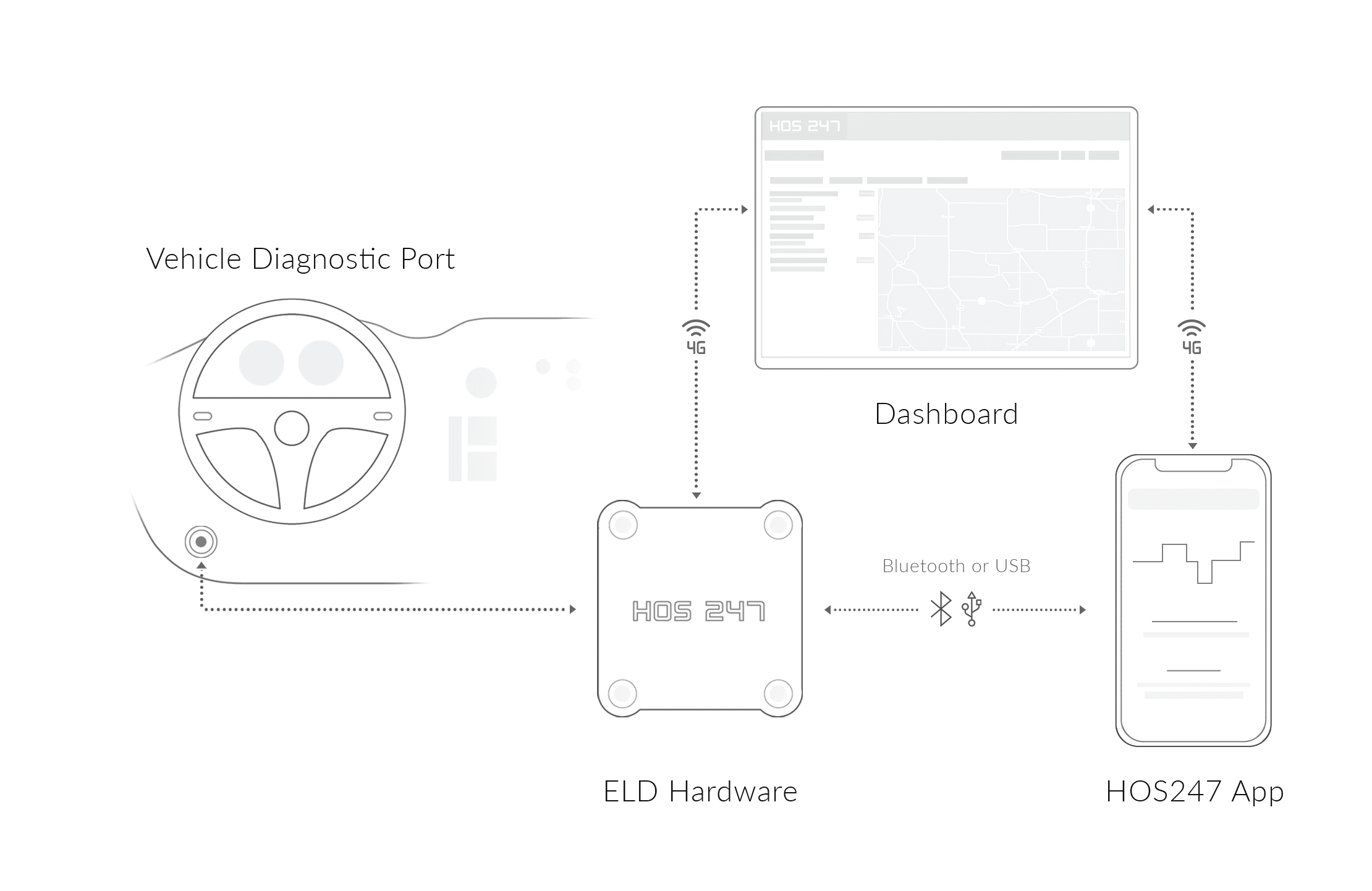
Key Features to Look for in an ELD Solution
Not all ELDs are created equal. The right system should feel like a helpful co-driver, not another complicated gadget to manage. Here’s what separates quality providers from the rest:
- User-friendly interface. Large buttons that work with gloves on, clear dashboard showing available hours at a glance, and simple dropdown menus mean you’ll master basic functions in minutes, not hours.
- Reliable hardware. Plug-and-play installation takes under 10 minutes, automatic engine connection eliminates bluetooth headaches, and rugged construction withstands extreme temperatures and vibration.
- Compliance confidence. FMCSA-registered devices that automatically update when rules change, handle complex calculations like split sleeper berth, and provide complete audit trails for smooth inspections.
- Support when you need it. Efficient phone support with trucking experts (not script readers), roadside inspection assistance, and response times under 5 minutes when you’re in a jam.
- Flexibility. Month-to-month or annual pricing options without long-term contracts, free equipment upgrades, and multiple device options (tablet, smartphone, or dedicated unit) to match your preference.
- Trial period. Trial periods with full feature access and easy returns if it’s not the right fit help you make sure you are choosing right.
- Growing with technology. Regular app improvements, integration with fuel cards and load boards, maintenance tracking capabilities, and driver scorecards that help you run more efficiently.
Choosing an ELD provider isn’t just about meeting minimum compliance requirements — it’s about finding a partner that makes your daily operations smoother. The right solution pays for itself through avoided violations, saved time, and reduced stress. Take advantage of free trials to ensure any system works with your specific needs before committing.
Making the Most of Your ELD’s HOS Features
Your ELD is more than a compliance tool — it’s a productivity enhancer when used strategically. Master these features to maximize your driving hours and minimize headaches on the road.
Personal Conveyance: Save Your Drive Time
Personal conveyance lets you move your truck for personal reasons without using drive time. Set up quick notes like “Moving to safe parking” or “Getting food.” That 20-minute drive to a better truck stop? It doesn’t have to count against tomorrow’s miles. Just make sure your notes are clear—vague entries like “personal” make inspectors suspicious. Use it when it’s real, not to cheat the system.
Yard Moves: Keep Highway Hours for Highway Miles
Switch to yard move the second you enter private property. At shippers, receivers, or terminals, this saves your driving hours for actual roads. This simple trick saves 30-60 minutes of drive time every day. Just remember to switch back to driving when you leave—forgetting this creates big problems during inspections.
Team Driving: Work Together, Drive More
Team driving needs both drivers on the same page. Write down every driver change in your notes. While one drives, the other should be in the sleeper getting rest hours. Good ELDs show both drivers’ hours on one screen so you always know who can legally drive. Switch drivers at fuel stops to save time.
Route Planning: Use Your ELD’s History
Check your hours before saying yes to any load. Your ELD remembers how long routes actually take—trust this instead of hoping for the best. Add extra time for traffic and weather (at least 10-15% more). Look for patterns: if Chicago always takes longer on Tuesdays, plan for it.
Smart Break Timing: Stay Ahead of the Clock
Take your 30-minute break early—at 7.5 hours instead of 8. This gives you wiggle room if something goes wrong later. Park before truck stops fill up in the evening. Use breaks wisely: make calls, do paperwork, or inspect your truck. Good timing means you’re rested, not racing the clock.
Dashboard Warnings: Your Safety Net
Learn your ELD’s warning colors. Green means you’re good. Yellow means pay attention. Red means find parking right now. Set alerts the way you like—some drivers want 30 minutes warning, others just need 15. If you keep getting the same warning, something’s wrong with your settings. Fix it before it becomes a violation.
Status Changes: Make It Automatic
Practice changing your duty status until it’s automatic. Learn the shortcuts on your device. Build a routine: pulling into dock = on-duty, finished with paperwork = still on-duty, dropping trailer = yard move or on-duty not driving. When you do the same thing every time, you are less likely to make mistakes that cost you money.
These features work best when they become habits. Pick one or two to start. Get good at those, then add more. Soon you’ll wonder how you ever drove without them.
HOS247 ELD Benefits for CDL Drivers
Making the switch to HOS247 is refreshingly simple. We’ve designed everything around getting you compliant and confident quickly, without the technical headaches common with other providers.
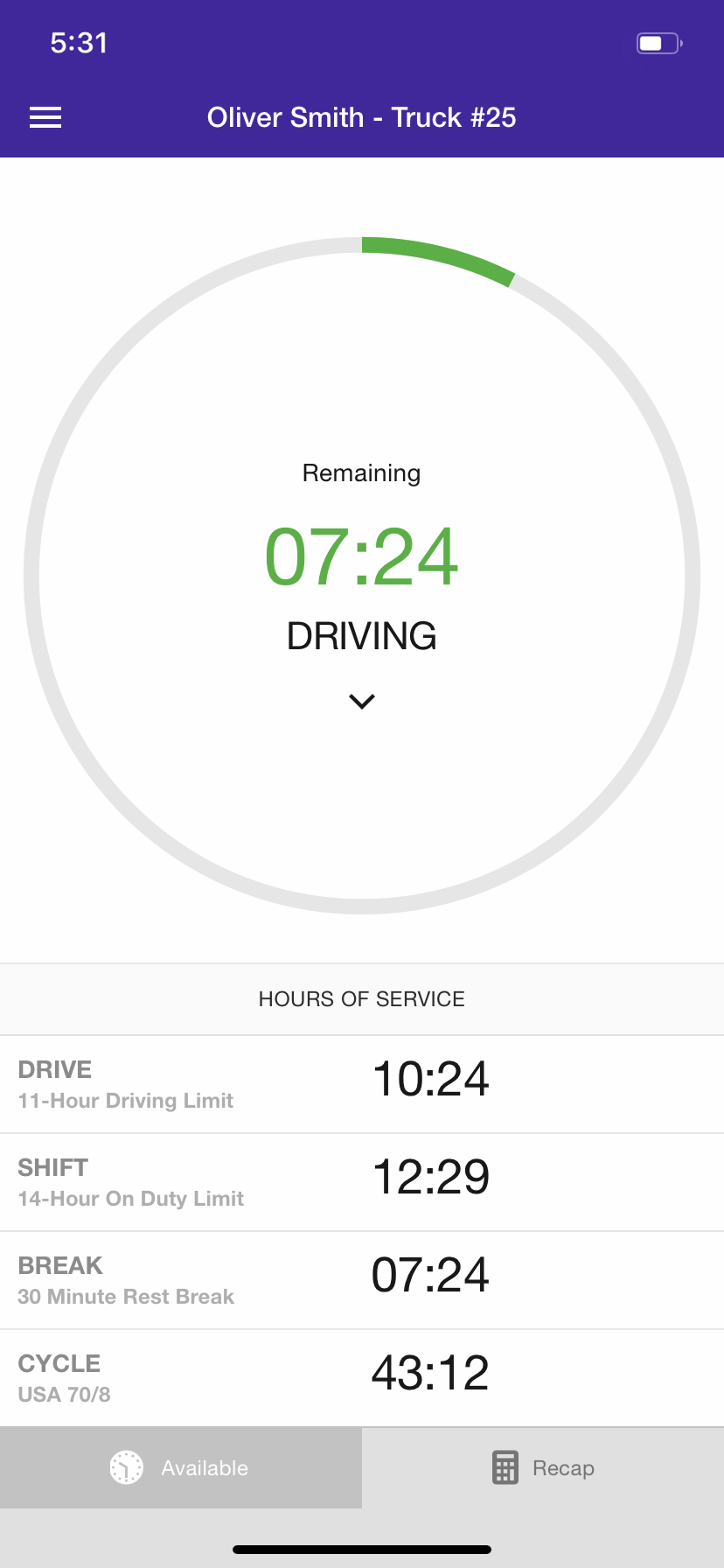
- Reliable logbooks. FMCSA compliance meets driver-friendly design in a system built for truckers. Complex HOS rules like split sleeper berth and 34-hour resets are calculated automatically, so you can focus on the road — not math.
- Simple installation. Plug into your diagnostic port, download the app, and follow three setup steps. Most drivers are running in under 10 minutes, no professional help required.
- Free device replacement. If your hardware fails for any reason during the first year, we’ll ship a replacement at no charge. No downtime, no paperwork headaches.
- Support during transition. Real humans who understand trucking answer your calls — seven days a week. We help transfer historical data, configure settings for your operation, and walk you through your first runs if needed.
- Risk-free two-week trial. Test every feature with full access, no credit card required, while running real loads. If you’re not completely satisfied, return it with no hassles, hard feelings, or surprise charges.
- Clear view of available hours. The app displays your remaining drive time, shift time, and cycle limits in one place with color-coded alerts — no menu diving, no second guessing.
- Automatic IFTA mileage tracking. Built-in GPS records mileage by state with precision, eliminating spreadsheets and manual calculations when tax time rolls around.
- GPS location tracking. Know where your trucks are in real time, with breadcrumb history, detailed logs, and location-based alerts for improved fleet visibility and accountability.
- No long-term contracts. You stay with HOS247 because it works — not because you’re locked in. Month-to-month plans let you adapt as your business grows or shifts.
Starting with HOS247 isn’t just about getting compliant — it’s about joining thousands of drivers who’ve discovered that the right ELD provider makes all the difference between dreading technology and embracing it.
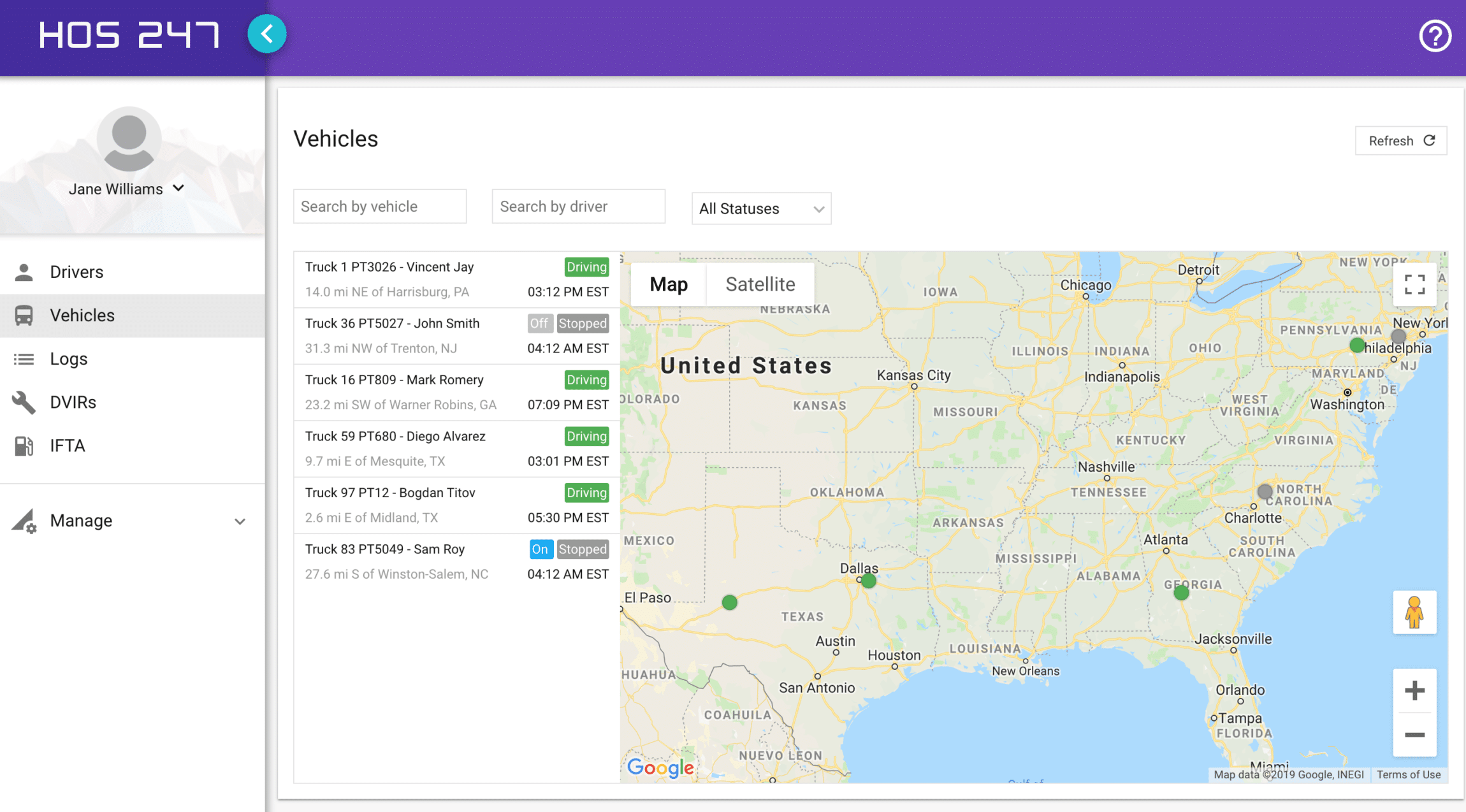
Common ELD Mistakes and How to Avoid Them
Even experienced drivers make ELD errors that lead to violations. These four mistakes account for most compliance issues — and they’re all preventable with simple habits.
Not connecting the ELD before driving creates unassigned driving events that become paperwork nightmares. Your engine starts, you begin moving, but the device isn’t connected — now you have drive time that needs explaining. Make it automatic: key in ignition, check for the green connection light. No light? Don’t move. It takes five seconds to verify, but saves hours of hassle during inspections.
Forgetting to change duty status happens most often at shippers and receivers. You arrive, switch to on-duty for check-in, then forget to stay on-duty while being loaded. Suddenly you’re showing off-duty time when you were actually working. Set phone reminders if needed. Better yet, make status checks part of your routine: every time you set the brakes, check your status. Every time you release them, check again.
Ignoring warning alerts is like ignoring your fuel gauge — eventually, you’ll get burned. That yellow warning about approaching your 11-hour limit? It’s trying to help you find parking before every spot fills up. The reminder about your 30-minute break? It’s preventing a violation that could cost thousands. Treat every alert as important. Configure them to your preference, but never disable them entirely.
Poor record organization makes inspections longer and more stressful. Officers want to see clear annotations, proper use of remarks, and logical status changes. “At shipper” tells them nothing. “Arrived XYZ Distribution, Detroit – unloading” explains everything. Keep shipping documents organized and accessible. When the DOT asks about a specific day, you should find it in seconds, not minutes.
The good news? These mistakes are entirely preventable with basic awareness and simple habits. Spend a week focusing on these four areas and they’ll become automatic. Most violations aren’t from drivers trying to cheat the system; they’re from honest mistakes that proper ELD habits eliminate completely.
Beyond Basic Compliance: Additional ELD Benefits
Modern ELDs deliver value far beyond avoiding violations. These additional features turn your compliance device into a business optimization tool:
- IFTA automation eliminates quarterly fuel tax headaches. Your ELD automatically tracks every mile in every state, calculating exactly what you owe. No more notebooks, no more guessing at state lines, no more wrestling with spreadsheets. Reports generate instantly with jurisdiction breakdowns. What used to take hours now takes minutes. During audits, you have perfect records at your fingertips.
- Fleet tracking keeps dispatchers informed without constant check-in calls. They see your real-time location, estimated arrival time, and available hours. This means fewer interruptions while you’re driving and better load planning from dispatch. Small fleets especially benefit — owners can manage multiple trucks from their phone while still driving their own routes.
- DVIR integration digitizes your vehicle inspection reports. Complete pre-trip and post-trip inspections on the same device that tracks your hours. Flag defects with photos. Mechanics receive alerts immediately. Maintenance history stays attached to each truck. When DOT asks for inspection records, everything’s right there — no lost paperwork, no illegible handwriting.
- Fuel savings come from monitoring idle time and driving behavior. See exactly how much fuel you’re burning while sitting still. Track hard braking and rapid acceleration events that waste diesel. Many drivers reduce fuel costs just by seeing their habits displayed clearly. Over a year, that’s thousands of dollars back in your pocket.
- Easy reporting simplifies everything from detention documentation to performance reviews. Generate driver scorecards showing safety metrics and efficiency. Create detention reports that help recover lost time payments. Export everything to spreadsheets for deeper analysis. Owner-operators can track profitability by load, lane, or customer — insights that improve business decisions.
These features combine to create real value beyond compliance. When your ELD helps you save on fuel, recover detention pay, and streamline tax filing, it stops being an expense and becomes an investment. Reliable providers, like HOS247, include these capabilities without extra fees — making your mandatory compliance device work harder for your bottom line.
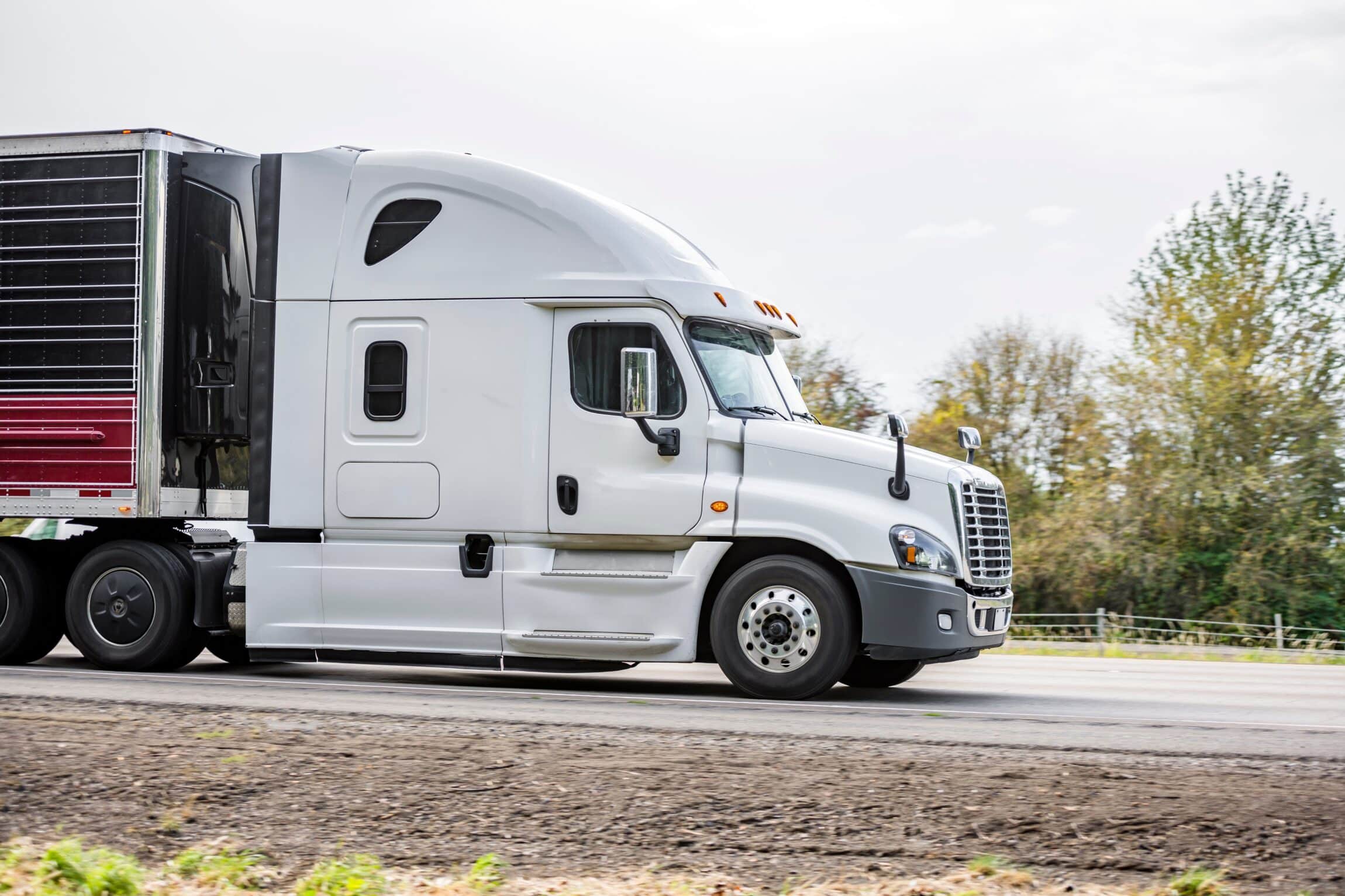
Conclusion
Understanding how many hours can a CDL driver work doesn’t have to feel like studying for an exam. Yes, the rules have layers — 11 hours driving, 14-hour windows, 30-minute breaks, weekly limits — but they all serve one purpose: keeping you safe and legal on the road.
The right ELD transforms these complex regulations from a burden into background automation. Instead of constantly calculating available hours, you’re focusing on driving safely and efficiently. Instead of dreading inspections, you’re confident in your compliance. That’s the difference between just meeting requirements and actually optimizing your operation.
HOS247 stands behind every driver using our system. We’ve built our reputation on reliability, simplicity, and genuine support. Our commitment goes beyond selling devices — we’re invested in your success on the road. When regulations change, we update automatically. When you have questions, we answer personally. When technology advances, you benefit immediately.
Don’t let HOS compliance complications cost you money, time, or peace of mind. In just two weeks, you’ll experience how the right ELD solution makes hours of service simple, automatic, and worry-free.
A Note to Our Readers on FMCSA Compliance
This article is intended for informational and educational purposes only. It is not a substitute for official regulatory guidance or legal advice. HOS and ELD regulations are complex and subject to change and interpretation by enforcement officials. Please always refer to official sources for the most current and accurate information.

As an expert in B2B and B2C sales, I’ve dedicated myself to perfecting sales processes and client retention strategies in the logistics and trucking industry. I have significantly contributed to the expansion of the ELD service, catering to retail and wholesale clients in need of HOS247 ELD solutions. My unwavering commitment to implementing state-of-the-art sales techniques and technologies ensures the continuous growth and success of businesses I work with.











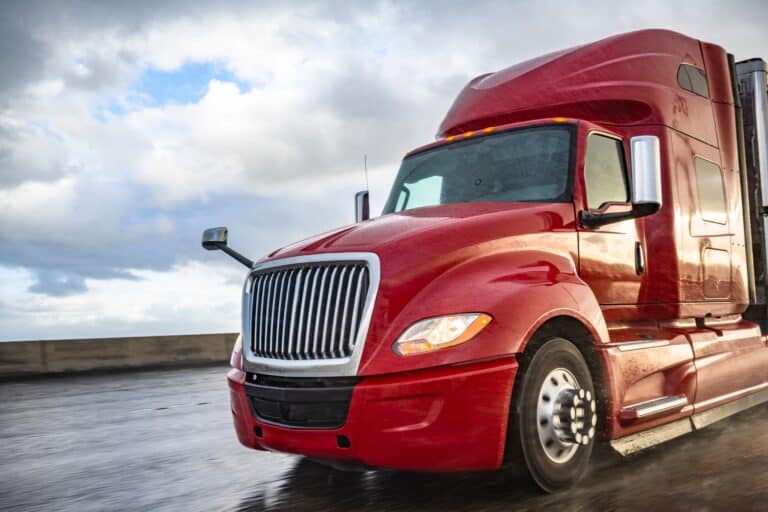
The ELD mandate implemented in December 2017 drastically changed the trucking industry. With several exemptions, elog rules require most commercial drivers to automate their working routine using FMCSA approved elogs. The initiative intends to avoid the problem of inaccurate data
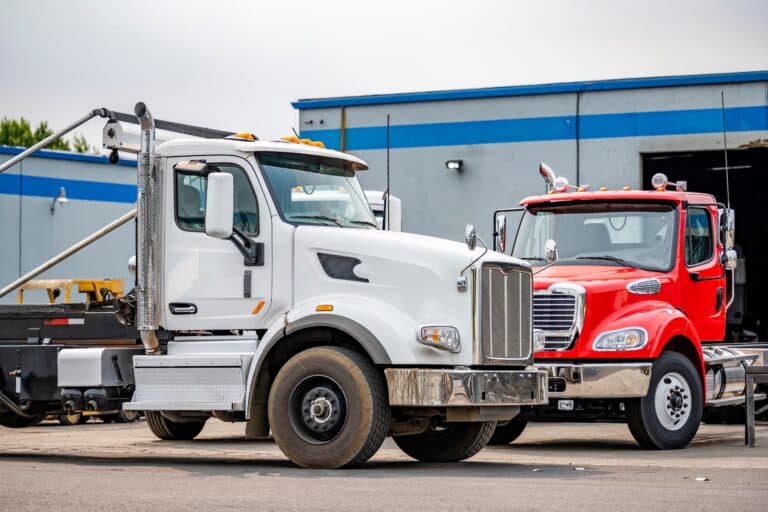
Truckers have a lot to consider when choosing an electronic logbook for their business. They need to be mindful of compliance, price, the user-friendliness of each log book app for truck drivers, and more. Considering the high turnover rate among
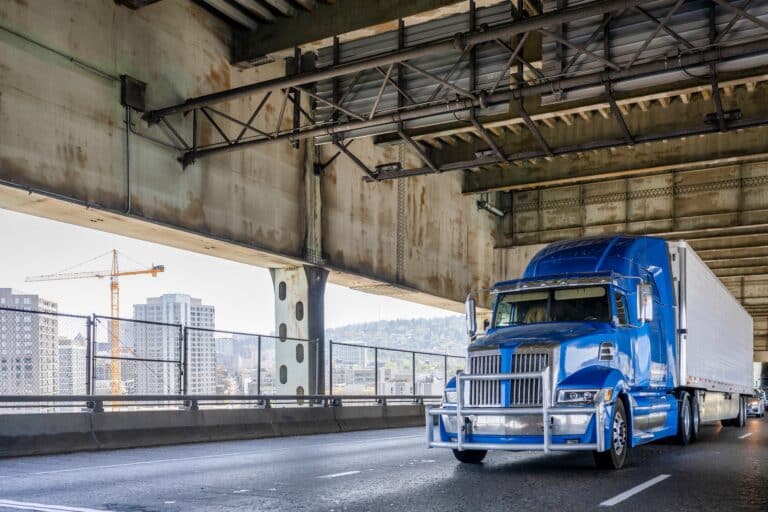
With the enforcement of the ELD mandate, truckers require electronic logbooks to demonstrate compliance with HOS regulations. While the need for a feature-loaded elog device is a priority, the long-standing debate on whether to choose an Android or iOS elog